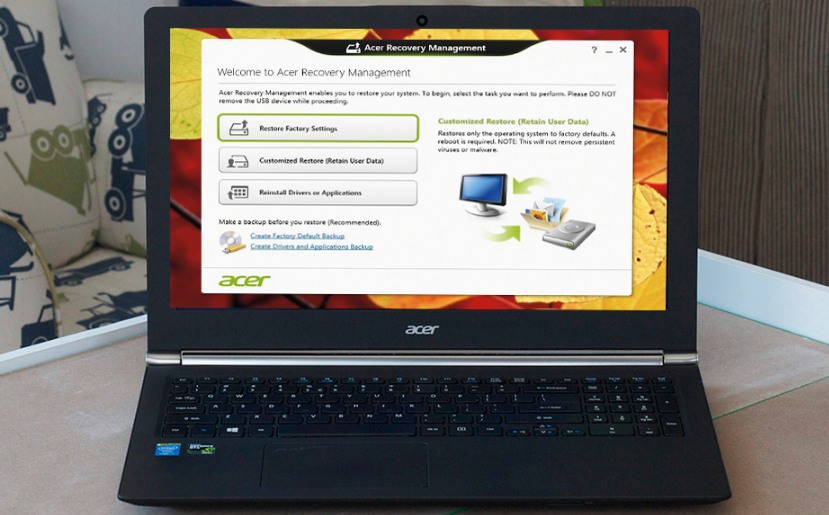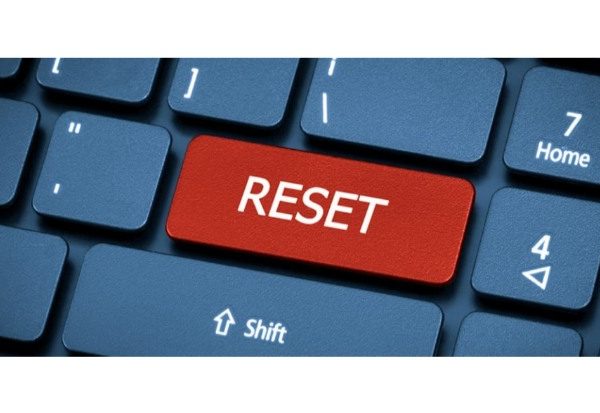Your computer is it running slowly? Has it hung numerous times? Do your apps occasionally crash? You may also experience screen freezing or be forced to view odd error messages. When you believe your system has reached the end of its useful life or is broken and useless, this is when it happens. That’s not the case, though. Such problems can occasionally be caused by bugs or other technical problems. You can take advantage of Factory Reset here. We have all got you covered if you’re wondering “How Long Does it Take to Factory Reset your PC”!
What Is A Factory Reset
You might frequently mix up the terms factory reset, hard reset, and soft reset. These procedures are all different. A soft reset occurs when you restart or log off your computer. Your system’s cache is cleared. When your device is having trouble, you can reboot it by removing the battery. Additionally, it cleans your computer’s cache.
The most effective option is a factory reset. It restores the factory defaults for all of your device’s settings and configurations, clears all of your data, system files, software, and programs.
While if your computer’s hard drive has been formatted, it is comparable to that. Only the information stored on secondary storage or external devices is kept. On your laptop or computer, there are several factory reset options.
Your system restarts after a factory reset and the OS is reinstalled. Furthermore, you must re-setup your device if you so choose. It is because it restores all settings to their original state. Additionally, you need to reinstall any third-party programs and tools you previously had.
It may have some disadvantages, but it is not the best way to resolve any problems with your computer, including freezes, device malfunctions, error messages, performance problems, or other problems of a similar nature.
Because they are machines, electronic equipment is susceptible to breakdowns at any time. Similarly, you can restart your computer to address any problems.
When Factory Resetting A PC, How Long Does It Take?
A factory reset takes different amounts of time on computers and laptops. It specifically depends on your hardware setup, the data you have, and the state of your PC right now.
The duration is typically between 30 and 3 hours. To put it another way, more data means more storage space, which means cleaning up your PC will take longer. Additionally, whether it uses primary or secondary storage is a factor. Do you decide to keep the data and make a backup instead of erasing it? If their OC is operating slowly, users will occasionally even wait overnight or for 6-7 hours to reset.
When you choose to reset, you will have two options for moving forward: Keep My Files and Remove Everything. When you keep your files, all of your apps and settings are restored, but your files are still kept. When you choose this option, the fine resets more quickly. Because the CPU is not required to remove private files, not all clutter is removed. When the PC restarts after the Factory Reset is complete, all of your files will still be present on the system.
Additionally, all of your apps, files, and folders, including system and personal ones, will be cleaned up if you choose to remove everything. You’ll even get a default setting for your entire system. Because your files need to be cleaned up as well, the factory reset will take longer than usual. Other data will be lost when the procedure is finished and your system is restarted.
How To Backup Files & Programs Before Factory Reset
When you reset your PC, you should think about backing up your files to an external storage device or using the Windows Backup & Restore feature to store your files so you can restore them after a fresh installation of Windows. If you want to back up your files and programs before factory resetting your PC, you should follow these steps:
- To begin, either click the Start button or press the Start key on your keyboard. Open the Control Panel by conducting a search.
- Navigate through System & Security -> Backup and Restore (Windows 7)
- Once you’re there, click on “Set up back” under the A setup wizard will appear under the Backup tab.
- If you want to let Windows automatically restore all files or decide them yourself, follow the setup wizard and select which external drive you want to back up the files to.
- Once you’ve gone through the setup wizard, you can click on the “Back up now” option to save all your files.
You can update an existing backup if you have one. To store your files and programs, you can create a new backup if you haven’t done so already. By following the instructions above, you can also start a brand-new backup from scratch.
How Come It Takes So Long?
The duration factory resets take a specific duration due to several factors, these are;
- Availability of power – Power is essential for ensuring that the factory reset happens. You should make sure your device is fully charged before beginning the process, as I previously advised. This will determine whether the process takes a long or short time to complete.
- Availability of hard disk and memory cards – The amount of resources that are available determines how long it will take to complete the process. You might have to wait a little longer, mostly in offices, for the business to get backup resources before the process can begin. This is essential throughout the process, so to speak.
- Professionalism – Not everyone is qualified to perform a factory reset, so it is important to have the knowledge and skills necessary. As a result, you should be more picky and cautious about who uses your machines and when. Additionally, doing this will aid in preventing damage to your machines, which further explains why it might take so long to reset your machine.

Reset This PC Vs. Fresh Start
For you to completely erase your current OS and delete all of your data, Windows 10 comes with a variety of factory reset options. These are the “Reset this PC” method and the “Fresh Start” method. Although these techniques are quite similar, they each have different applications for which they are better suited. Here is an explanation of them.
Reset This PC
In order to reinstall Windows with all of the pre-installed drivers, trial software, and bloatware, select Reset this PC. This will erase everything on your computer, including all of its files, folders, apps, and settings. Thus, when Windows is reinstalled, everything but the pre-installed software and drivers will be removed from your system.
Additionally, you can use this option to save important files and prevent their deletion from your HDD or SSD. The system can also be made to delete all the files.
Reset this PC is typically used when something is wrong with your system, like if a virus infects it. Before selling computers, it is also employed to erase all personal data.
Fresh Start
Similar to Reset this PC, Fresh Start wipes out everything on your computer and installs Windows again, but unlike Reset this PC, drivers, trialware, and bloatware aren’t set up automatically. All software and drivers (including bloatware and trialware) are downloaded through the Windows Update. However, it’s possible that some drivers that Windows Update failed to identify won’t be reinstalled.
Additionally, the Fresh Start option lets you keep your files and crucial information. Contrary to the Reset this PC option, it does not enable the option to delete everything.
How To Fix Windows 10 Reset Stuck
The installation process during Windows reset might get stuck at any percentage for a very long time. This typically happens as a result of a corrupt file in your system, which prevents your PC from performing a reset. Another possibility is that a reset file is malfunctioning and preventing operations like copying your previous files.
You might be wondering how to resolve this problem and successfully reinstall Windows on your computer. We’ve discovered through research that there isn’t a solution. There is no accurate estimation of how long you will have to wait; you must wait for the reset process to move. It is advised that you hold off on any further action for at least 8 hours.
You can attempt a PC reboot if you feel like you’ve waited long enough. Windows should pick up where it left off with the resetting process after restarting. But because it might damage your system, we wouldn’t advise it.
You can also shut down your computer and use a different machine to create a bootable USB drive for Windows 10 that you can use to backup the data on the first computer. The same USB drive or any other external device of your choice can be used for file backup.
It’s time to perform a clean installation of Windows 10/11 on your PC after you’ve finished this and backed up your crucial data. A USB drive or installation disk can be used to install Windows. Your old C drive needs to be formatted for a secure installation. Your backed-up files can be copied from the external drive to your new PC once Windows has been installed. That ought to make the issue go away.
Final Words
You’ve changed your mind, so you don’t want to restore your computer to its default settings. You can access everything if you have previously backed up your data to an external hard drive or other storage system. If you ran the restore in Safe Mode, it cannot be undone. The restore cannot be undone if you’ve performed it through System Restore options
If you installed the Windows 10 upgrade over your existing Windows 7 or Windows 8 version at that time, the restoration of the factory settings will no longer work! You might need to manually install Windows 10 in this situation.
